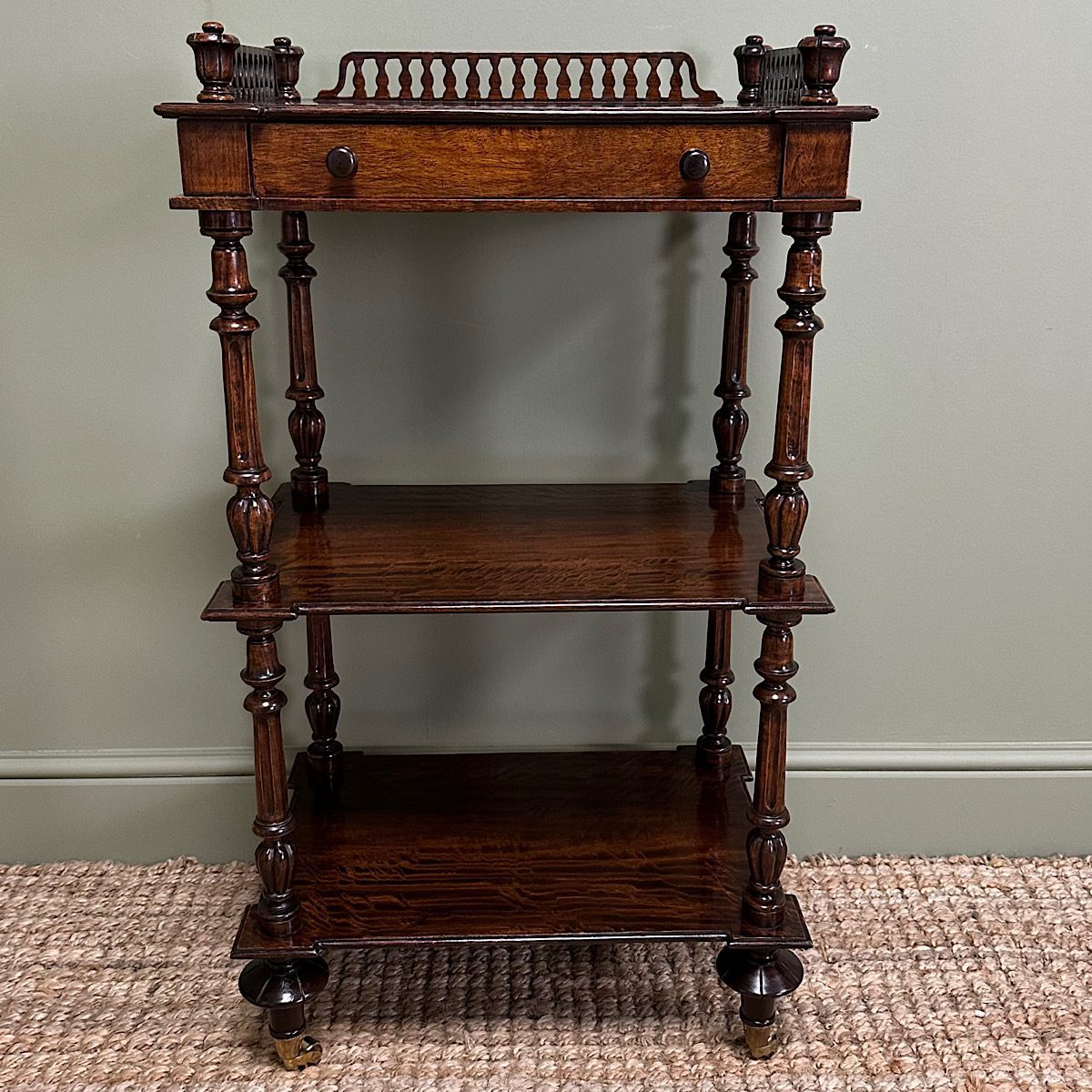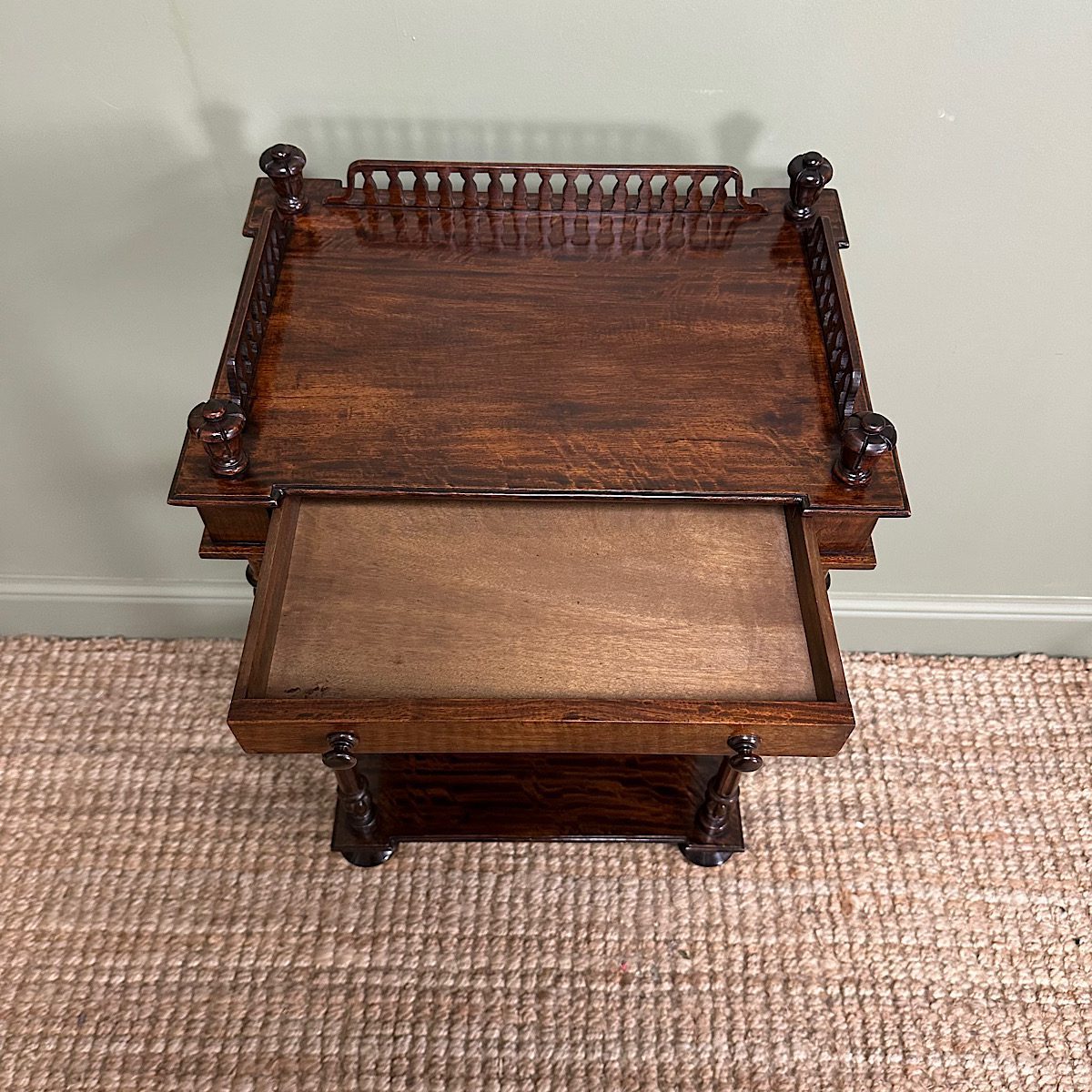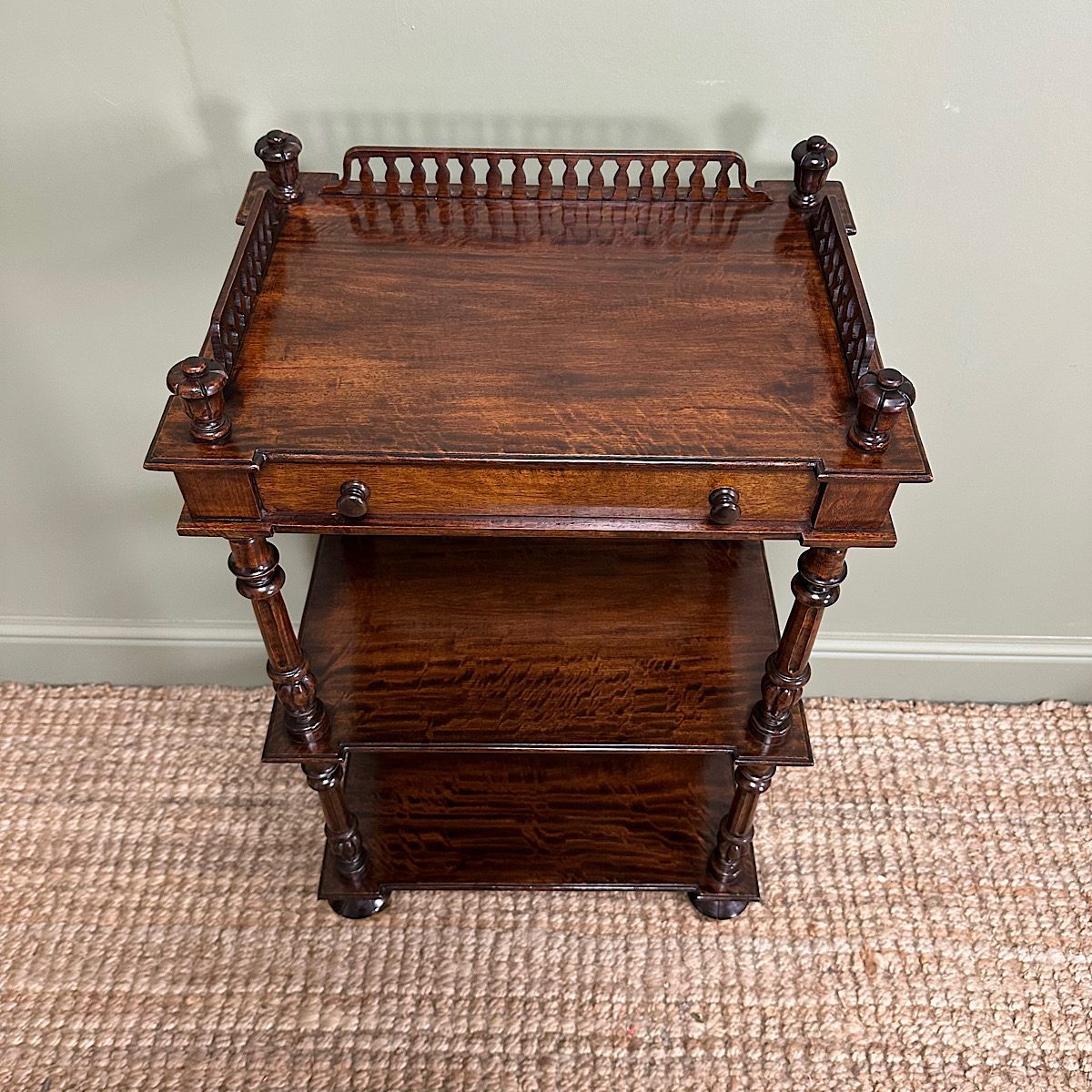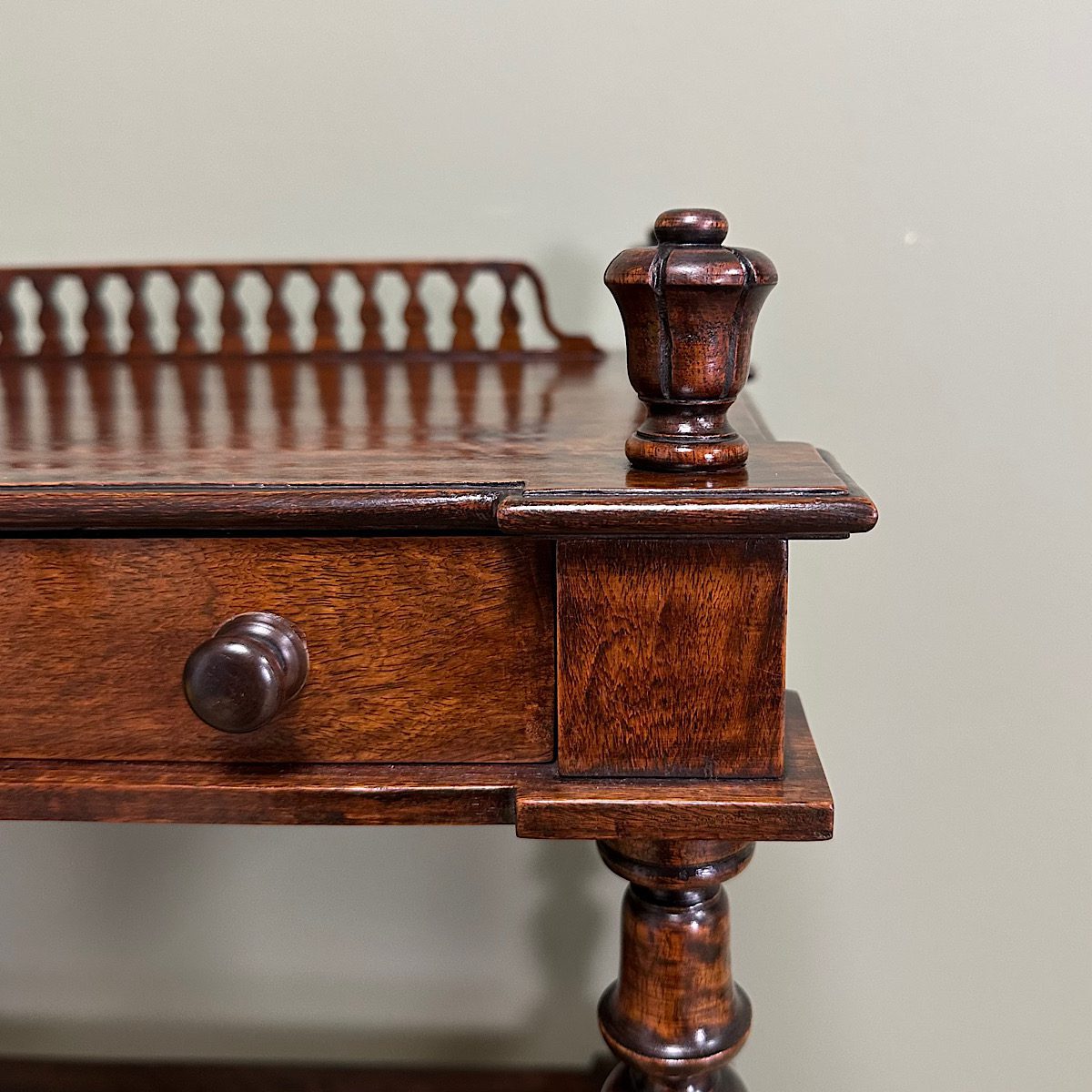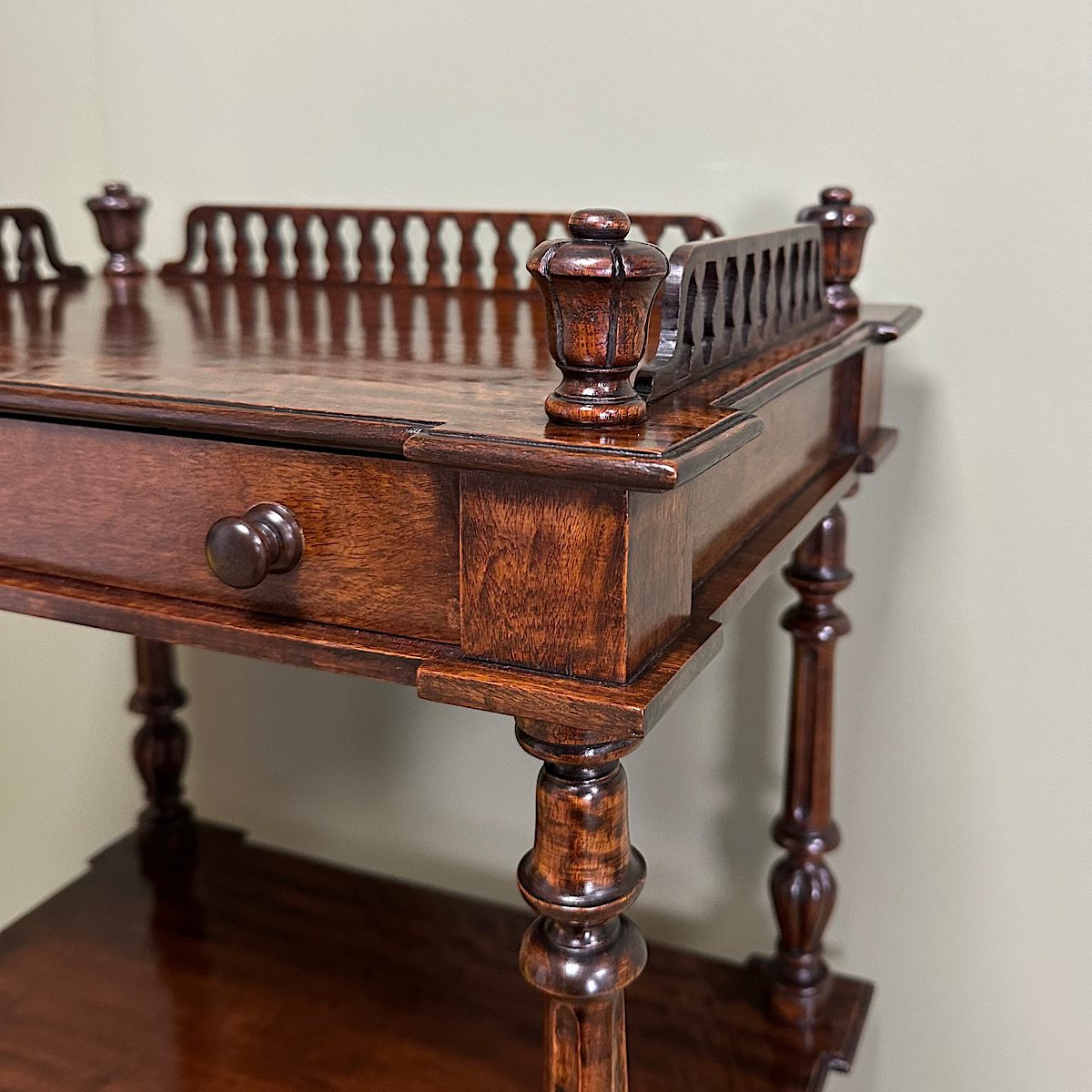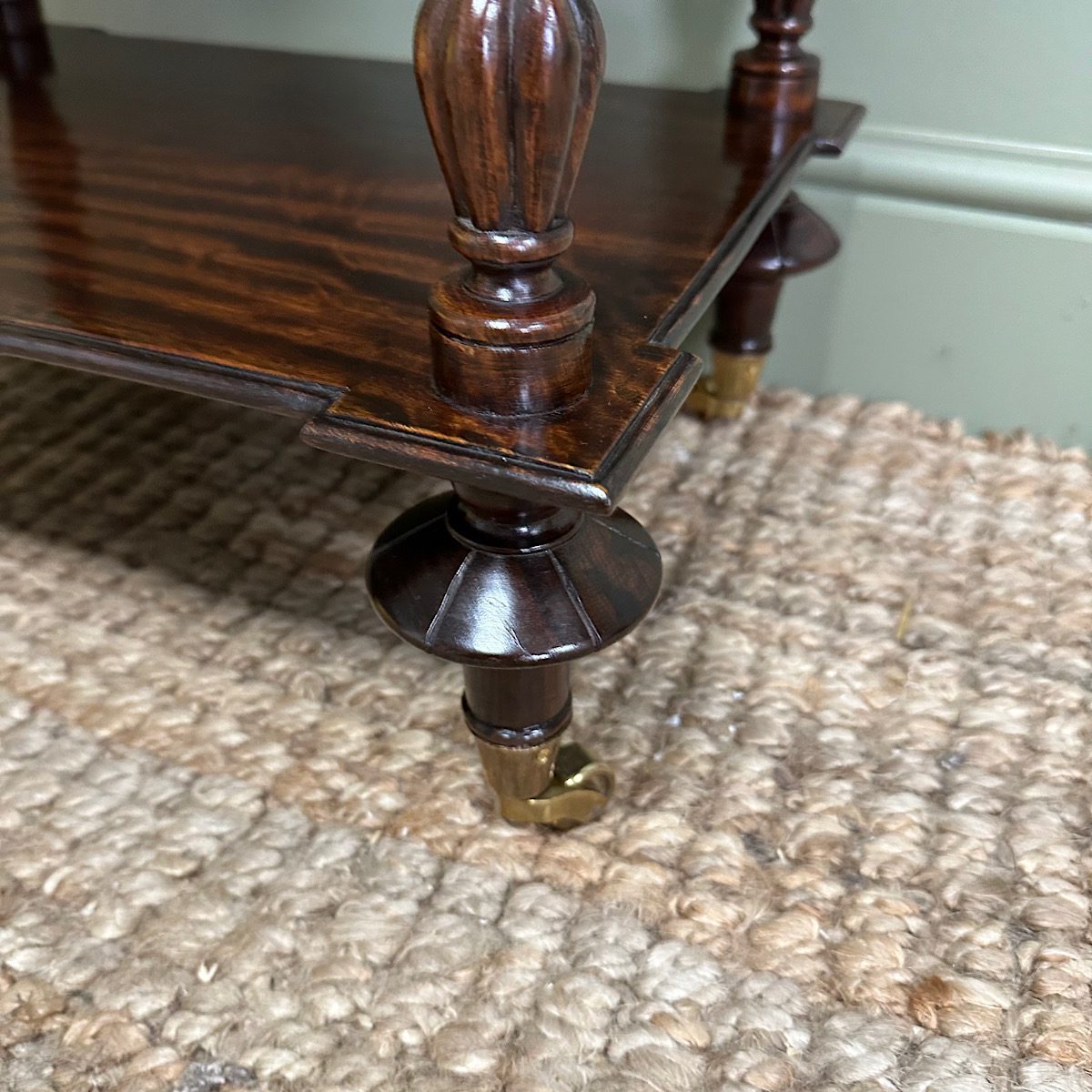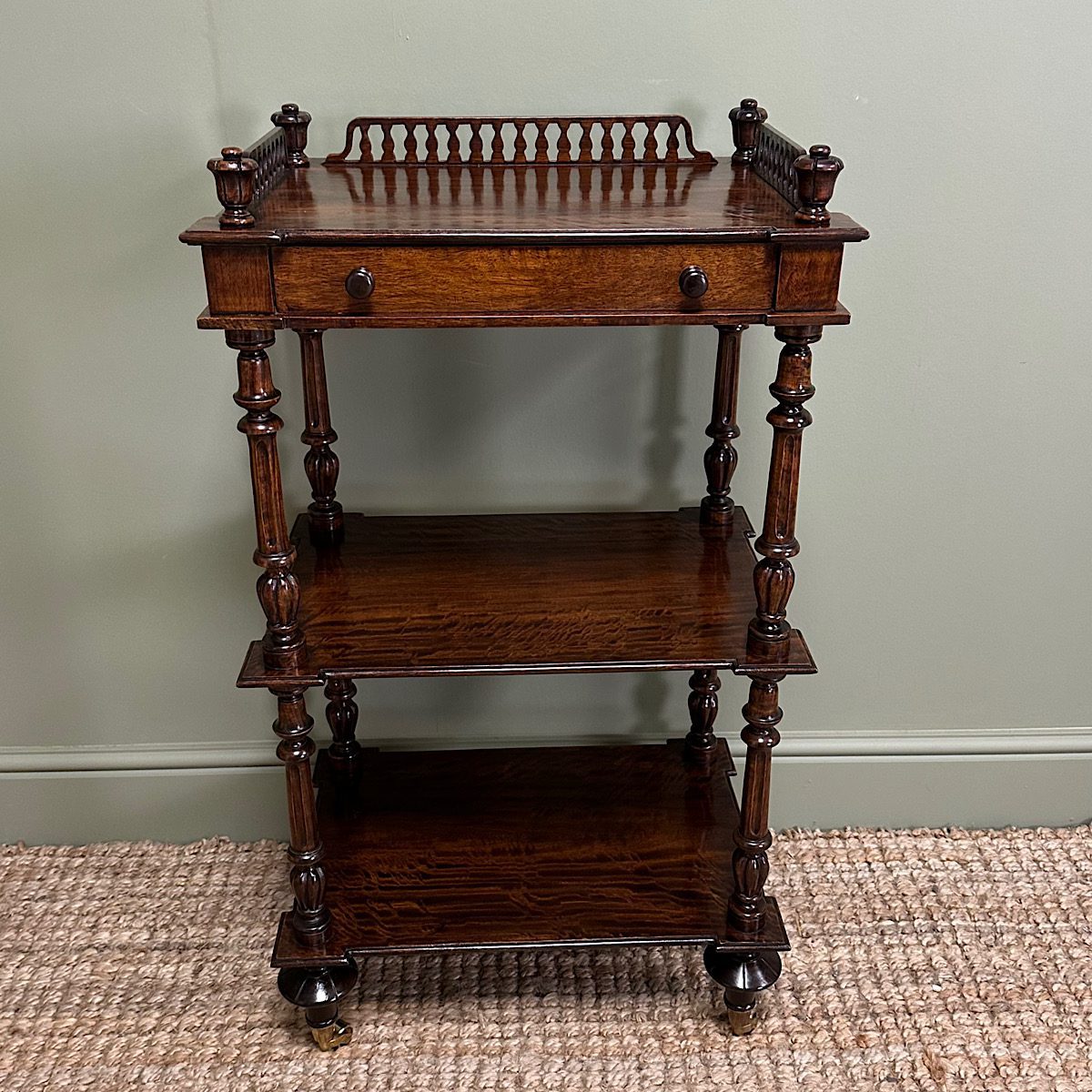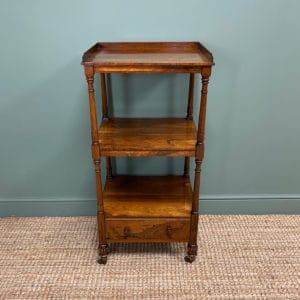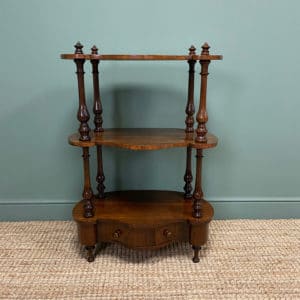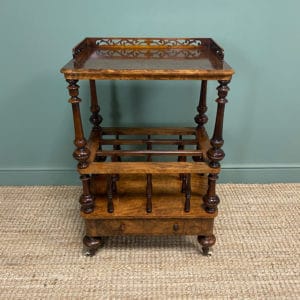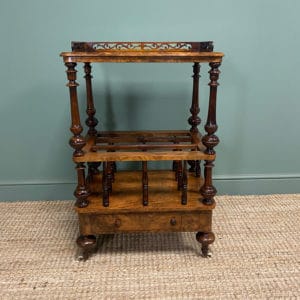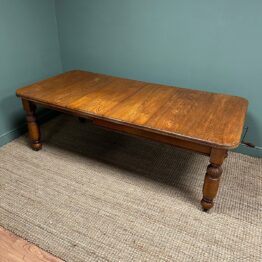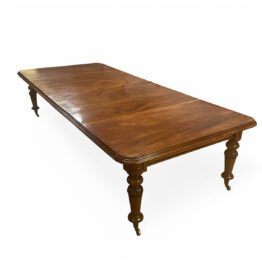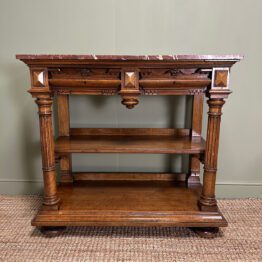Description
Unusual Victorian Antique Whatnot
This Unusual Small 19th century Mahogany Antique Whatnot circa, 1880 is of superb quality. It has a fret-work carved up-stand with small turned finials above three tiers with beautifully turned upright supports. This fine antique whatnot stands on elegant turned bun feet with Brass cup castors. The shelves have a variety of uses such as book stand, displaying collectables or as use as a lamp table. This fine antique has aged to a rich mahogany shade with a striking grain, good patina, is in very good condition and has been beautifully cleaned using a traditional form of antique wax finishing.
Approximate Dimensions are:
Height: 89 cm / 35 inches
Width: 49 cm / 19 inches
Depth: 34 cm / 13.5 inches
Ref No: 08893
Please click on antique furniture image for larger photo.
Standard One Man Delivery £60 + VAT within mainland England, Scotland and Wales
Two man assembled delivery – Quote upon Request
Our antiques come with a 28 day money back guarantee, see terms & conditions.
Overseas Insured Door to Door Shipments – Quote upon Request
What is an Antique Whatnot?
The antique whatnot stand was intended to display a variety of objects, ornaments, curiosities, books and papers. They are usually in very nice serpentine or simpler rectangular shapes, with three shelves and occasionally one or two drawers below. They were supported by turned columns at the edges. Whatnots were very popular in the 19th century and they were usually made of mahogany, rosewood or walnut and were sometimes had ormolu mounts. In addition the shelves of some pieces were edged with pierced brass galleries. More finer examples was the étagère. The French word étagère meaning stand, combines both the qualities of the English dumb waiter and the whatnot put together. They usually had two or three tiers and was used for displaying objects or for serving food. French etageres were more highly decorated than British ones. By the 1860s there was a large variety of different designs available, from ones that had ormolu mounts, gilding, motifs and Rococo curves and scrolls.

